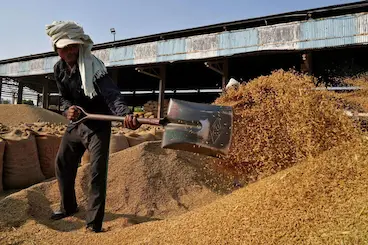
- India’s record rice surplus is being redirected into ethanol production, marking a dramatic shift in agricultural policy
From Bumper Harvests to Biofuel Ambitions
Green Gold – India’s agricultural landscape has undergone a seismic shift. After years of battling erratic monsoons and export restrictions, the country now finds itself with a record rice surplus, a staggering 59.5 million metric tonnes as of June 1, far exceeding the government’s buffer target. This glut, while a testament to favourable weather and improved farming practices, posed a logistical and economic challenge: what to do with so much rice?
The answer came in the form of ethanol. In a bold policy pivot, the Indian government has allocated 5.2 million metric tonnes of rice, nearly 9% of global rice shipments, for ethanol production. This move not only helps manage overflowing granaries but also propels India closer to its ambitious 20% ethanol blending target, which it nearly achieved last month at 19.8%.
This shift is more than just a numbers game. It signals a strategic alignment of agriculture with energy policy, positioning India as a global leader in biofuel innovation. With sugarcane yields hit by drought and maize prices soaring, rice has emerged as the unexpected hero in India’s clean energy narrative.
The Double-Edged Sword of Surplus
While the ethanol push is being hailed as a green triumph, it’s not without its critics. Redirecting food grains to fuel production has reignited the age-old “food vs fuel” debate. Skeptics argue that using edible rice for ethanol, even in times of surplus, could set a dangerous precedent especially in a country where food inflation and malnutrition remain pressing concerns.
Moreover, the economics of rice-based ethanol are still evolving. The Food Corporation of India (FCI) currently sells rice at ₹22,500 per tonne, while oil companies procure ethanol at ₹58.5 per litre. Industry experts warn that unless procurement prices are adjusted, the margins may not be attractive enough to sustain large-scale production.
There’s also the ripple effect on other sectors. With rice easing pressure on corn demand, maize prices have stabilized, offering relief to poultry farmers and feed manufacturers. But this delicate balance could tip if rice stocks dwindle or if global grain markets tighten.
A Visionary Leap or a Risky Trade-Off?
India’s ethanol strategy is undeniably bold. It reflects a government willing to take calculated risks to meet its climate goals, reduce oil imports, and empower farmers through alternative revenue streams. The early achievement of the 20% blending target, six years ahead of schedule, has saved the country over ₹1.5 lakh crore in foreign exchange and slashed carbon emissions by millions of tonnes.
Yet, the road ahead is fraught with complexity. As India eyes even higher blending targets, questions loom: Will rice continue to be the fallback feedstock? Can the country maintain food security while scaling up biofuel production? And how will this shift impact small farmers, consumers, and global grain trade?
What’s clear is that India’s ethanol pivot is more than a policy tweak—it’s a paradigm shift. One that could redefine how nations balance agricultural abundance with energy needs in a warming world.
Stay updated with the latest news on Rapido Updates. Keep yourself updated with The World, India News, Entertainment, Market, Automobile, Gadgets, Sports, and many more